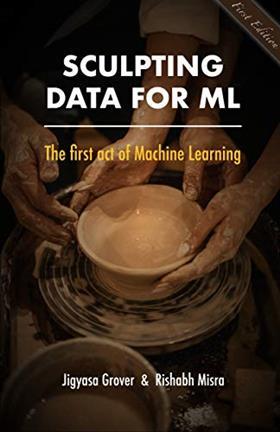Jigyasa Grover is – by any standards - a high achiever in the field of Machine Learning. A multi-award winner in AI and Open Source, Co-author campaigning for a data-centric approach to ML, and currently Twitter’s Senior ML Engineer, she spoke to IBC365 about the risks and opportunities that data and AI present to the media industry and society as a whole.
“Technology is touching every aspect of our life and in a way shaping humankind in the present era. With its significance augmenting each passing day, it is highly crucial to have certain checks in place to promote its ethical growth and avoid socio-economic damage to society.”

As the Rise Awards R&D Winner, as well as winner of various accolades including: Women of Impact, Next Generation Leader of the Year, Outstanding in AI, Young Role Model, VentureBeat’s Women in AI Rising Star Award, the Moxie Women in Tech, and Empowering Women Innovator of the Year, Grover’s insights on the development of AI and the accessibility of data are crucial to our understanding of where we are headed, and crucially, where we should be aiming to improve.
Read more Generative AI and sustainability: Vital, but at a price
Referring to modern-day AI systems, she commented: “Even a slight crack in their design can lead to disastrous outcomes propelled by cyber-attacks, reverse engineering, and leakage of sensitive data like personal conversations, financial transactions, medical history, and so on. Therefore, it is imperative to retain the confidentiality of data, maintain the privacy of proprietary design, and stay compliant with the latest regulations and policies.”
Deep fake misinformation
When asked for her insights on technological innovation in particular, she alluded to some of the dangers this can present: “With the advancement in image processing and machine learning technology, it has become so much easier to generate images, audio, and video of situations that did not happen in reality, which is quite daunting. This type of fake manipulative audio-visual content is created using deep learning, a special branch of machine learning involving neural networks, hence the name, and has the potential to create major havoc.”
She was clear about the detrimental impact of such ‘deep fakes’ which can lead to the propagation of misinformation on social media: “for instance - celebrity pornography, tweaked videos of political leaders to induce conflict, hoax calls, and so on. It should be noted that the idea of faking content is not novel, it has existed for a while now via ‘Photoshop’ and regular video editing, however, deep fakes are such a robust convincing set of media that it is almost impossible to tell the fact from fiction.”
“Deep fakes are such a robust convincing set of media that it is almost impossible to tell the fact from fiction.”
“The success of these [deep fakes] can be owed to the humongous amount of data available for training on the web these days in the form of images and videos, which are now the popular medium of content, thanks to social media networks like TikTok and Instagram. Evidently, deep fakes have a lot of potential to create havoc in our society by seeding and boosting social conflict, fraud, and revenge in society.”
Grover stressed that it is of the “utmost importance to construct ways to accurately detect and flag this set of counterfeit images and videos as early on in the propagation journey as possible.” However, noting the considerable irony that “deep learning has proven to be one of the more precise methodologies in performing this act of distinction between genuine and fake content online.”
The long road to diversity
When asked how she sees the industry changing in the near future, Grover pondered that although there has been an ‘immense evolution’ and progress in the tech workforce in the field of AI and ML, “we still have a long way to go.” She noted that inclusion of all, regardless of backgrounds, race, colour, and gender, within various fields of work from ethics to marketing, “is sure to bring about a diversity of thought in practice which is much needed for well-rounded innovation.”
“[Inclusion is] sure to bring about a diversity of thought in practice which is much needed for well-rounded innovation.”
Which brings us to another important topic which must be addressed within the industry: the diversity and gender gap.

“A quick reality check points to the fact that there is a wide diversity and gender gap in technology, and it is more prominent in senior roles and executive positions. The industry should look at bridging this gap as a deliberate and iterative process rather than hollow attempts during the dedicated honorary months.”
As a step in the right direction, Grover acknowledged the positive initiatives practised by many organisations who “publish compensation ranges amongst different slices of their workforce [which have] shown progress toward achieving workforce equity. Pay parity supplemented with fair, structured, skill-oriented recruiting and dispensing an environment of work-life balance is a promising direction for industry leaders to work on.”
“The industry should look at bridging this gap as a deliberate and iterative process rather than hollow attempts during the dedicated honorary months.”
Sustainability and AI – not to be overlooked
With AI so heavily dominant in social advancements today and even influencing decision-makers, there is another risk that it presents and must not be overlooked: “According to the World Economic Forum, despite having transformative power, AI has the potential to accelerate environmental degradation in the case of untamed growth. Computationally expensive processes like high-volume data mining, supercomputing, training large language or vision models over months, etc. are often run on machines powered by electricity which is primarily generated using natural gas or coal.”
Grover dug into the specifics, pointing out that: “researchers from UMass published a study on how training a single AI model can emit as much carbon as five cars in their lifetimes. This quantification of the carbon footprint of AI is alarming and a reminder of our responsibility towards building more energy-efficient techniques to achieve the same.”
But there are alternatives studied recently that indicate a “high potential for applying AI to combat climate change, provided they are harnessed using energy-efficient means. The major dimensions where there is room for growth include personalised recommendations based on macro or micro-level measurements of carbon footprint, forecasting natural disasters like wildfires or floods via regionalised modelling, and supporting collaborative ecosystems, for instance, monitoring epidemics, intelligent irrigation systems, and projecting migration patterns and thereby protecting biodiversity.
She concluded that the option is there to keep sustainability a priority: “While present-day AI solutions to tackle climate change are gaining traction but are difficult to access and dispersed, we can envision them to be unified and available at scale in the long-term future.”
Read more Artificial intelligence in broadcasting





















No comments yet